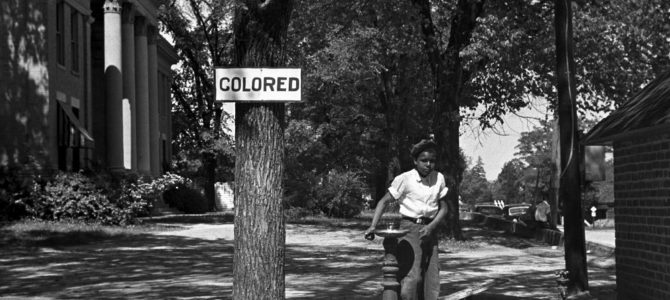
Do you remember Harambe? He was the gorilla that got killed at the Cincinnati Zoo in 2016, and quickly became an Internet meme. He also almost got a student at my college arrested.
When some of my fellow students at the University of Massachusetts made jokes about Harambe on the whiteboards outside their dorm rooms, residence advisors decried the jokes as “microaggressions” that are a “direct attack to [the] campus’s African-American community.” That was in 2016, but things haven’t gotten much better since.
This hypersensitivity and political correctness is commonplace at colleges across the country, so you’d think campuses would be full of racial acceptance and cultural fusion. Nothing could be further from the truth. Ironically, a campus culture rampant with identity politics has only reinforced social divisions and discouraged integration.
At UMass, in the liberal bastion of Western Massachusetts, walk into any dining hall and you’ll see some students socializing across racial lines — but most often, black students will be sitting together, while nearby tables are filled with white students. This is all voluntary, but it’s sad to see such self-segregation. Campus housing isn’t much better, as many Asian students choose to live in one area together on campus, for no real reason.
In 2016, California State University stirred up controversy when the college unveiled a special “Black Living-Learning Community,” not formally segregated, but thematically designated as a space for mostly black residents. The University of Connecticut boasts something similar, a “ScHOLA²RS House” where African American students will be prioritized in selection.
It’s long been standard practice to structure student housing around common interests, like engineering-focused floors, language study immersion wings, or fraternity houses. But that type of housing can bring people of different backgrounds together, whereas the race-based dorm structure emerging across the country keeps people in their cultural comfort zones.
The result is a system of higher education that’s never been more diverse, but remains unfortunately divided. Most colleges enroll students from all races and backgrounds, yet the actual level of social interactions across racial lines isn’t nearly as high as you’d hope. This lack of integration has a profound effect, as students leave campus with less exposure to peers from different backgrounds, and often lack the empathy for others that’s central to the American ideal.
Some would blame the diversity itself for this division, but they’re missing the point. Diversity is a good thing. It’s actually identity-politics-laced campus initiatives that are driving students apart instead.
Take the concept of “microaggressions” as an example. At many American colleges and universities, first-year students are subjected to microaggression education, a startling experience where they’re taught to avoid certain, seemingly harmless phrases in everyday conversation because they might offend people from minority groups.
This anti-racism effort is taken seriously: A University of California at Los Angeles professor even told students that microaggressions are “assaults directed at people of color” that can potentially be “lethal,” because they can cause “racial battle fatigue,” where perpetual exposure to racism supposedly leads minority students to suicide. To be sure, subtle racism can be draining over time, but it’s absurd to act like everyday phrases can be forms of assault.
Common examples of these “microaggressions” are relatively harmless, including: “What are you? You’re so interesting looking!” and “Where are you from or where were you born?” Some people now believe meritocratic phrases like “Everyone can succeed in this society, if they work hard enough” and “America is the land of opportunity” should be deemed microaggressions as well, because they ignore what liberals view as systematic oppression in our society.
A few of these phrases may very well be rude or debate-worthy, but framing offhand remarks or innocent platitudes as forms of everyday racism just pushes students to retreat into their identities, and shuts down cross-cultural conversations.
This has a corrosive effect on inter-racial relations. How can we expect students to feel comfortable talking to or befriending students of another race when they’ve been told that a slip of their tongue or an awkwardly worded compliment could be perceived as racist? It’s only natural that students in such hyper-racialized environments would retreat into self-segregation or accept school policies that encourage it.
Every October, in anticipation of Halloween, students are taught about “cultural appropriation,” the idea that dressing up as another culture is a form of racism. This is taken to its extremes: At my university, staff distributed a flowchart flyer to help students identify the “threat level” of their Halloween costume.
But by defining students by our race, today’s campus climate does everything it can to discourage cultural assimilation. This usually starts as soon as freshman orientation—with lectures about microaggressions, implicit bias, and “white privilege” (even though almost all students at American universities are among the world’s most privileged people). While well-intentioned, these efforts only hyper-racialize the campus climate.
It’s no surprise that this results in racially backwards re-segregation. Pomona College hosted a “People of Color Art Show” to which white students weren’t invited. A Latino student group at Scripps College even hosted a no-whites-allowed pool party, where hosts combed through social media profiles, seeking to ensure that they only invited non-whites.
In 2017, Evergreen College held a “Day of Absence” where white students were asked to stay off campus. These are just a few examples, but things like this are happening at campuses across the country. Colleges are trying to promote racial progress through diversity-based initiatives, but this kind of regression is what we actually get from identity politics.
The truly progressive vision for higher education (and all of America) is that students of all races and backgrounds live and learn together in harmony. At the 2004 Democratic National Convention, Barack Obama put this vision into words: “There’s not a black America and white America and Latino America and Asian America; there’s the United States of America.” On today’s liberal college campuses, that vision of racial harmony would sound out of place—and identity politics are to blame.









